Mikki Kunttu – Imperfect Light
Posted on April 2, 2024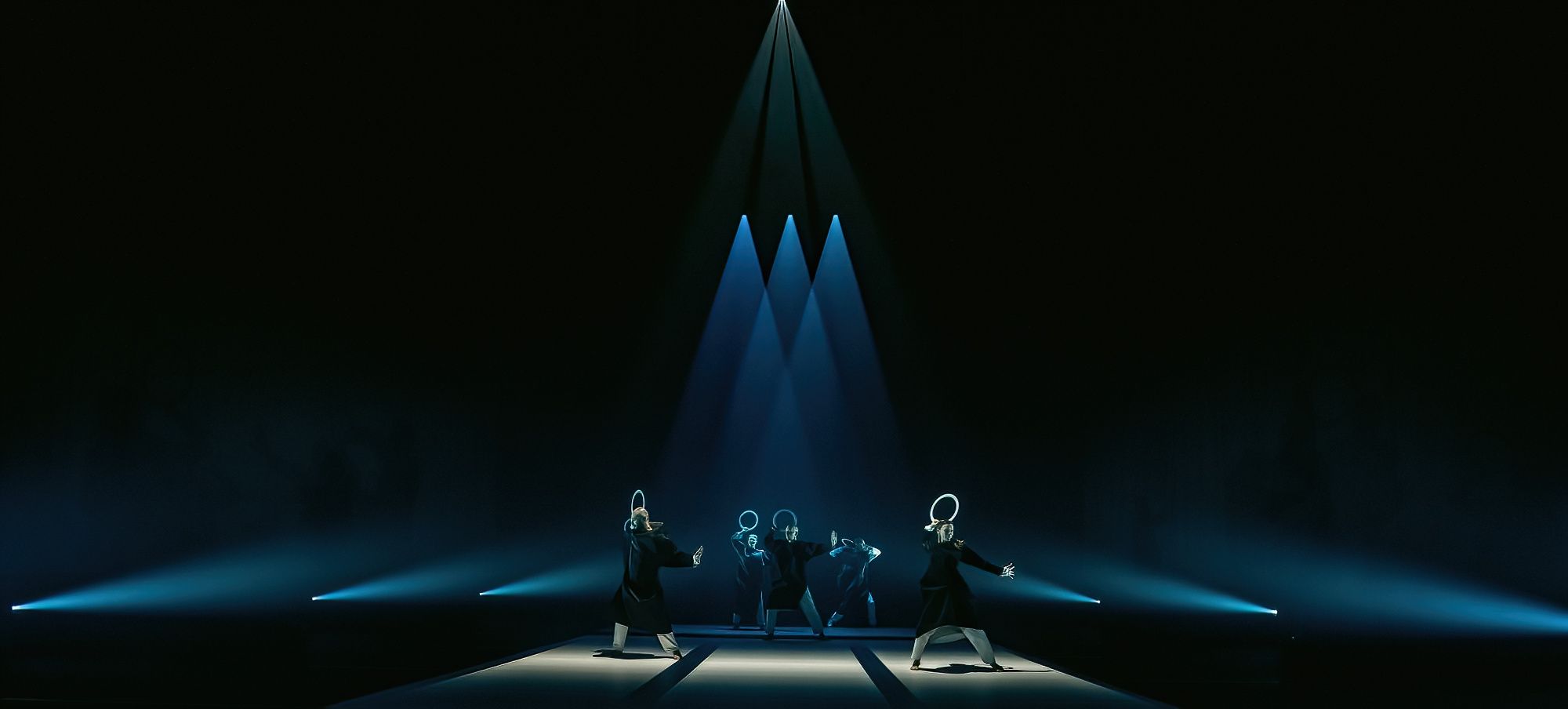
Looking at the impeccably balanced work of this Finnish visualist and designer one cannot help but be struck by its intricately crafted blend of light and darkness, and its seamless intermingling of shapes and space. Words like “flawless” and “perfection” come to mind, when attempting to describe his designs for clients like Cirque du Soleil, Eurovision Song Contest, The Walt Disney Concert Hall, Nightwish, Boston Ballet, Tero Saarinen, the Finnish National Opera, and the Danish Royal Ballet.
Mikki Kunttu, however, steadfastly avoids such absolute perfectionist phrases. For him, imperfection is not only unavoidable, it is also essential to the creative process, driving designs in new, and sometimes unexpected directions that make them compelling, interesting, more human, and, as he puts it “less mechanical.”
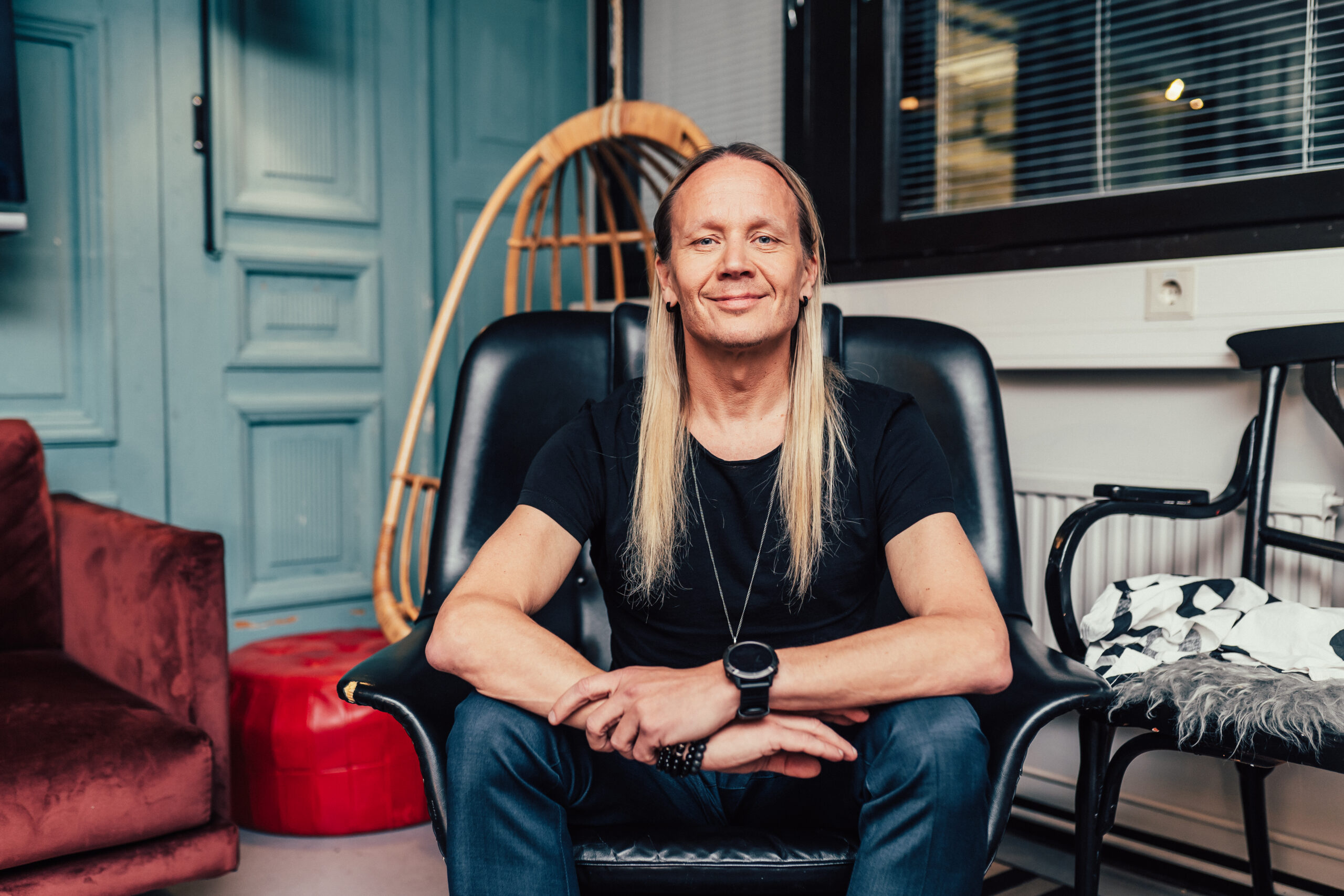 In his more-than-30-year career, the multi-award-winning designer has combined this fearless philosophy with an intense focus on fine tuning even the smallest details of a project to create a body of work in dance, theatre, opera, TV productions, and major events that is stunning in its execution without ever losing its warm and engaging human quality.
In his more-than-30-year career, the multi-award-winning designer has combined this fearless philosophy with an intense focus on fine tuning even the smallest details of a project to create a body of work in dance, theatre, opera, TV productions, and major events that is stunning in its execution without ever losing its warm and engaging human quality.
Kunttu’s impact on the world of design has been so great that on the occasion of his 50th birthday, a four-day celebration “In The Light Mikki Kunttu” was held at Finland’s Tampere Hall to honor his achievements. It drew prominent lighting and scenic designers from across the globe.
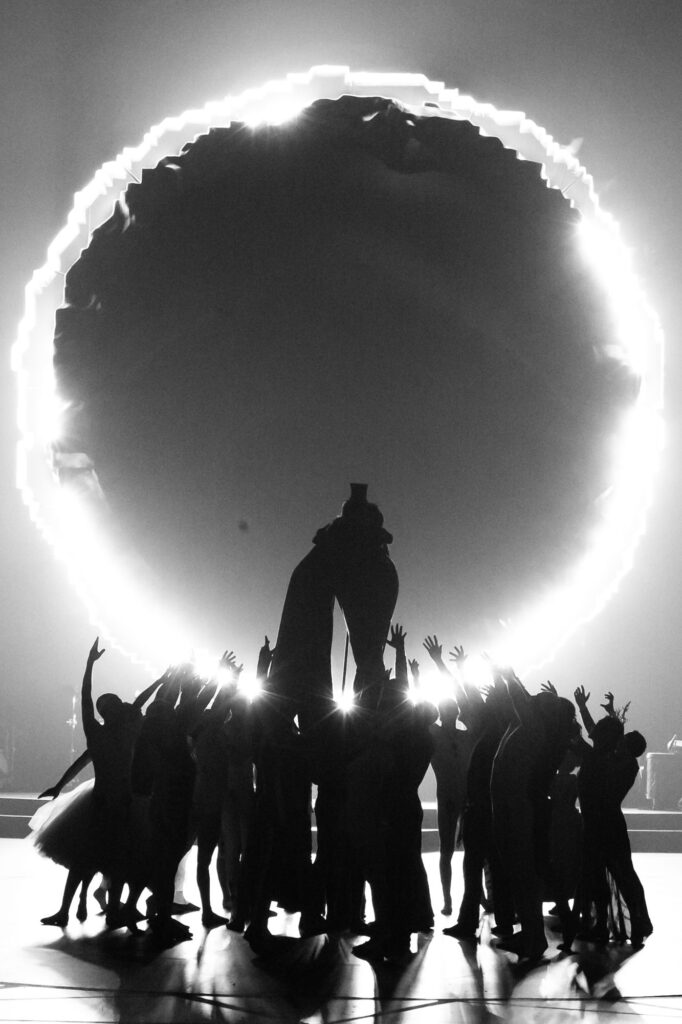 Taking time from his busy scheduled, Kunttu shared insights into the philosophy that has guided his career. As he delved into his story, we were remined of the Salvador Dali quote “Have no fear of perfection, you’ll never reach it.” Based on Mikki Kunttu’s success, we thought of revisingit to “have no fear of losing imperfection, it will always be there to inspire you.”
Taking time from his busy scheduled, Kunttu shared insights into the philosophy that has guided his career. As he delved into his story, we were remined of the Salvador Dali quote “Have no fear of perfection, you’ll never reach it.” Based on Mikki Kunttu’s success, we thought of revisingit to “have no fear of losing imperfection, it will always be there to inspire you.”
You work with light, but darkness and shadows play such an important role in your creations. How would you describe the quality that darkness brings to a design?
“There are of course many ways to look at this question. The first one being the somewhat metaphoric element, which refers to the dark side of the story, the dark side of the mind, the dark side of the world – and which, for me, is most times the more intriguing chosen perspective when creating visuals for stage. On the other hand, when speaking about light as a physical phenomenon on stage, it needs to be embraced and contrasted by darkness. Without darkness as its companion, the light does not harness itsfull power. In my world what holds the ultimate inspiration and unlimited possibilities is the darkness As soon as the first light is lit, some parts of the possibilities are sculpted away. For me lighting design is always subtractive and the real question is what do you want to sculpt out, not what do you want to show.”
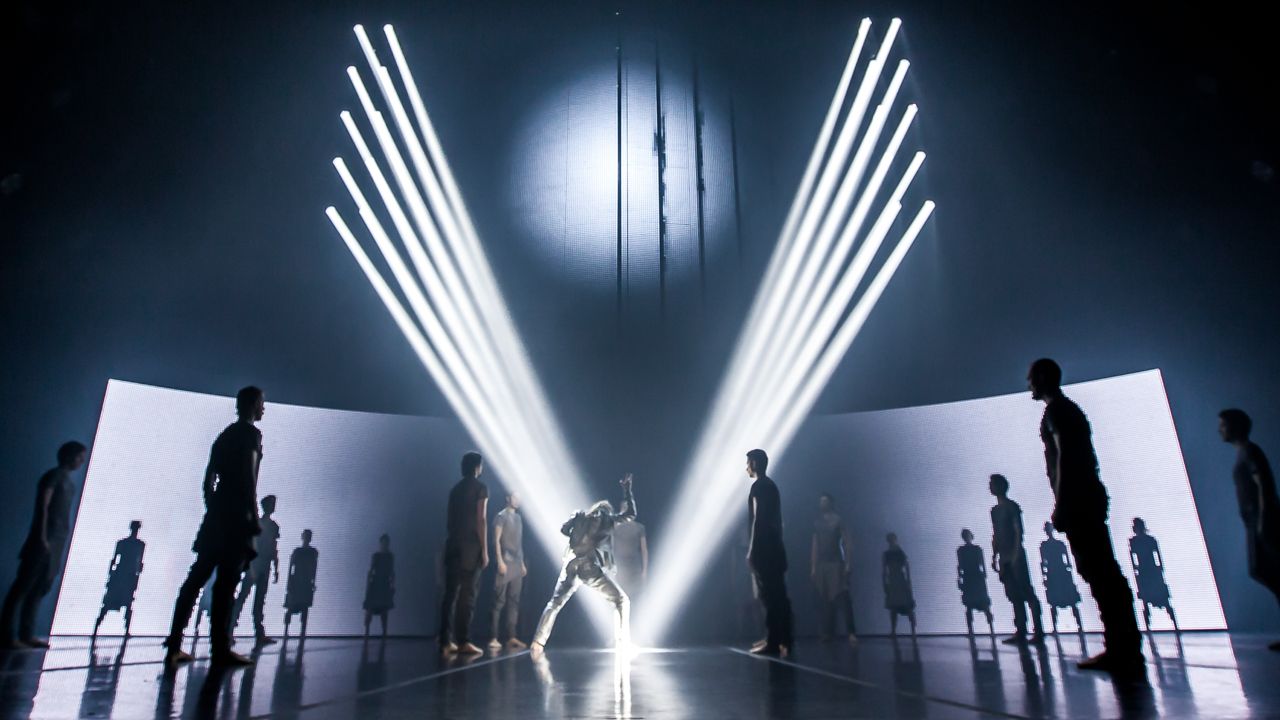 Is there a differenceinhow you use black space as opposed to dark gray-shadowy space?
Is there a differenceinhow you use black space as opposed to dark gray-shadowy space?
“I might put it this way: I feel total black or ‘darkness’ is the best possible manifestation of perfection. Greyscale is already a compromise from that perspective. Having said that, it is also worth mentioning that perfection is never interesting at all, if not contrasted by some compromising element for reference, which in this case would be light that is greyscale, energy and brightness. On one hand, in creation I tend to look at the stage and observe if and when the picture gets too washed out and loses its contrast, which usually means the much needed black levels of the space are killed by unnecessary greyscales, most often created by unwanted light pollution.”
One more about darkness, when you begin a design, what do you look at first, where light will go or where darkness will remain?
“I don’t thinkI can really answer that so directly. I think the element of darkness and contrast is always an important player in all the decisions and especially at the early stages of the design process.
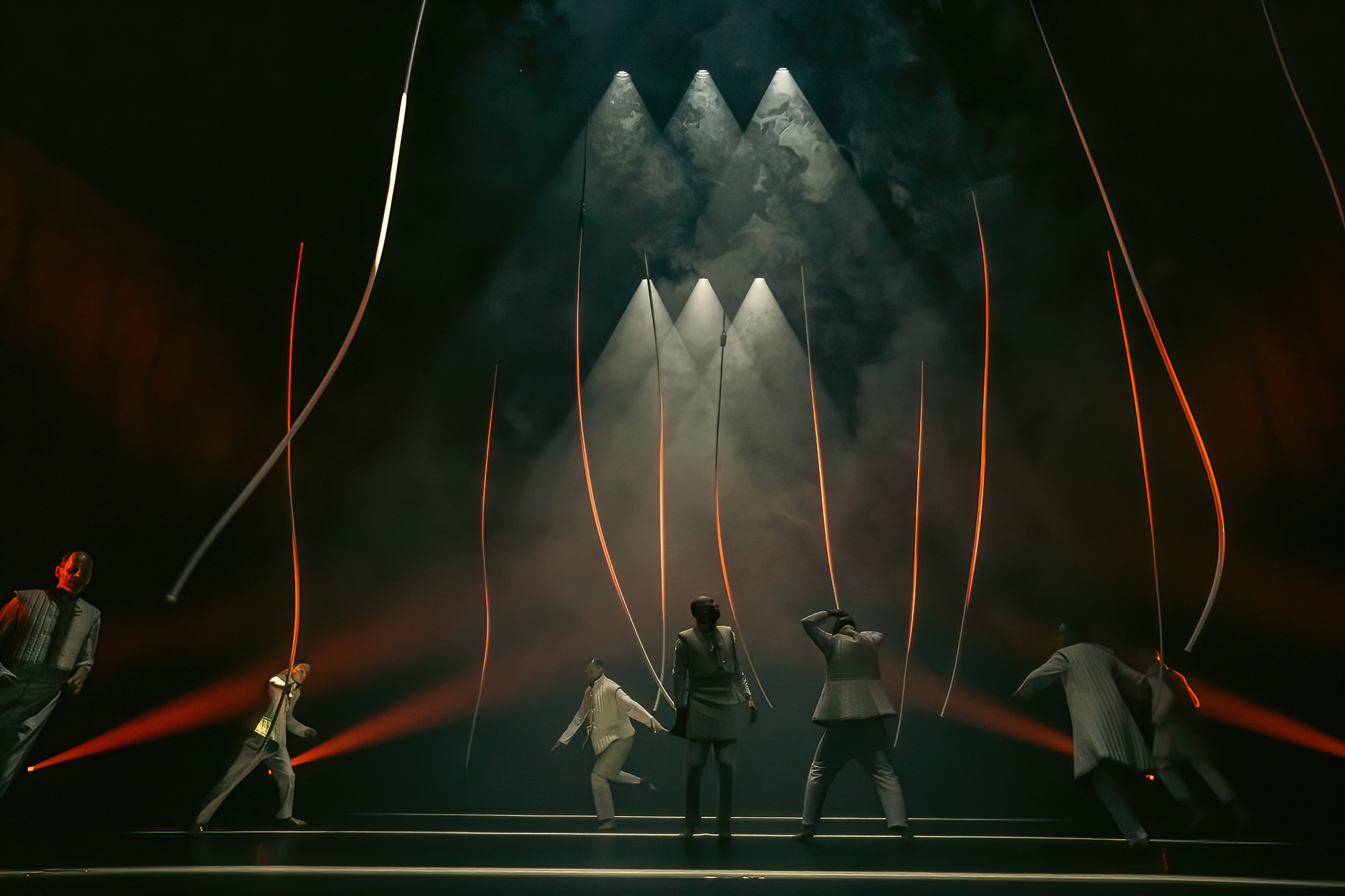 Athing we’veadmired about your career is even after the acclaim you’ve earned, you don’t hold on to the “tried and true,” but are always willing to take chances and push yourself in new directions. How do you maintain this hungry edge and sense of adventure?
Athing we’veadmired about your career is even after the acclaim you’ve earned, you don’t hold on to the “tried and true,” but are always willing to take chances and push yourself in new directions. How do you maintain this hungry edge and sense of adventure?
“For me this is a weird question. By that I mean that I would feel strongly as a failure if I just started to somehow repeat a ‘proven formula,’ if that kind of thing even exists, I don’t know. Of course, a designer has his/her own style and naturally chooses to repeat some elements that can be spotted across the productions over the years. This I believe can be more a question of one’s style, and something that brings the certain quality into the designs no matter the genre. I’ve always been interested in the process of creation and all the unknowns it always presents. Basically, I have always felt that the core desire to reach for the unknown creatively is the guiding principle. It was clear from early on, that it is so damn easy to just sit back and think now you’ve ‘got it.’ When in reality, you don’t ever want to ‘get it.’ A creative approach meansbeing a little lost most of the time!”
Along those lines, what do you feel imperfection can add to a design?
“Perfection in any form is not at all interesting. It manifests something machine-like, sterile and exclusive. The most touching pieces of art have a strong emotional factor that imperfection often perfects, and is therefore inclusive. Then it is a whole different question where and how the imperfections can and should appear in any given work. That’s maybe one of the core questions of being an artist.”
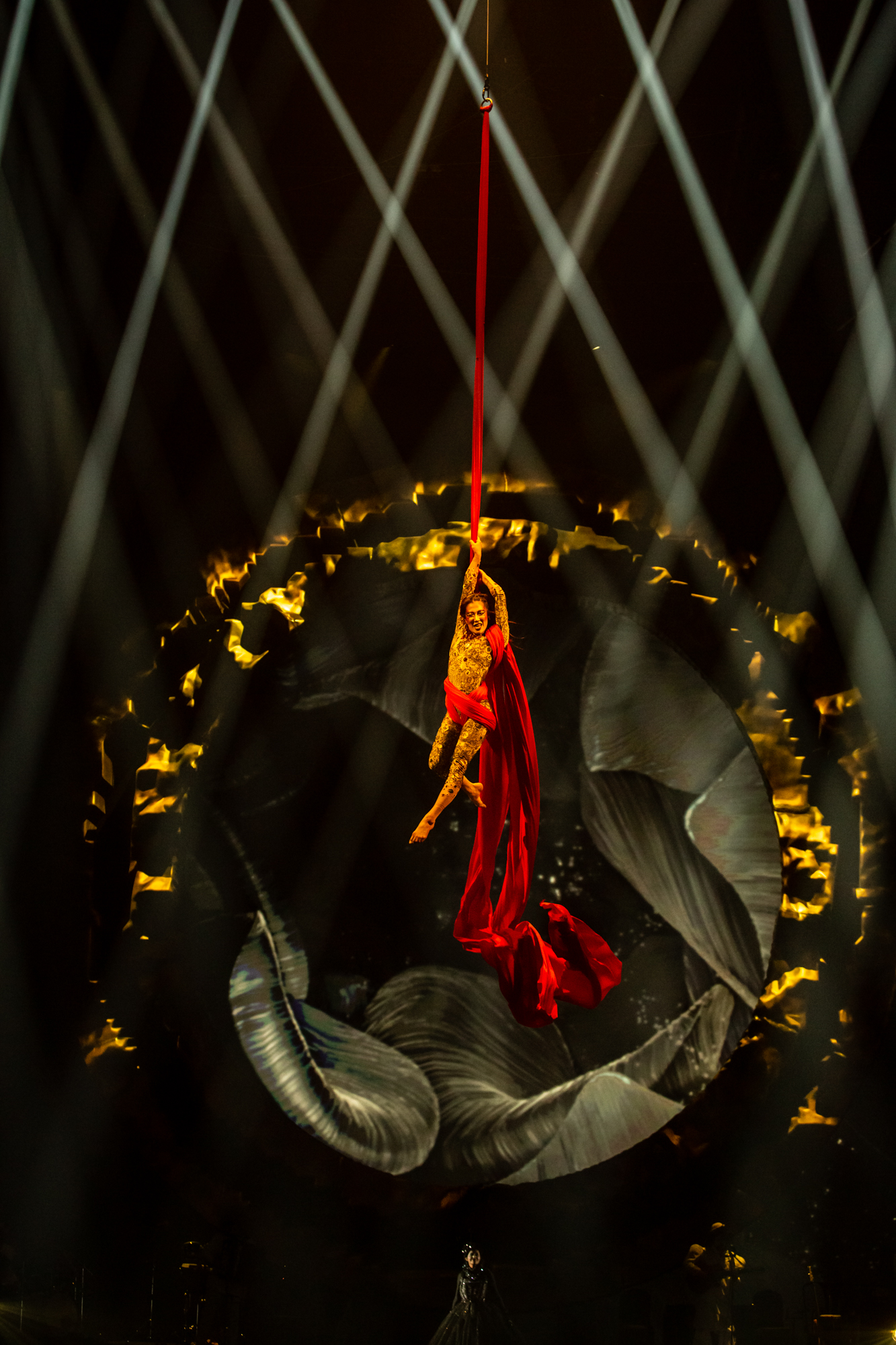
You have done extensive work in dance. How does the physicality and personality of a dancer influence the way you design for a dance performance?
“The best dance works I’ve seen have always been very much created on the talent and the persona of the dancer, or dancers, and the collaborators. This way of creating would very potentially also hint into the direction of very collaborative approach to working as a team. In an ideal scenario each individual feels both challenged and highly supported by the collaboration and the artistic demand is born out of everything we all bring to the mix. Creative work is really no different from child’s play, you ideally invite everyone in the group to play and create and flow together. I think finally one in the group needs to be the director of their own part (lighting, sound, costumes, stage direction…) for the things not to fall completely apart.”
Many designers have never worked in dance. What lessons that you have learned from dance do you think would be most useful for designers working in the concert-touring world?
“Oh, I would say at least for me, it has totally taught me the way I look at the talent on stage. By this I mean basically everything that is NOT said. The way a person carries themselves, the way they move, the relation between the performers and the relation between the performers and the space. What is static, what is in motion and so on. Sometimes the song is in motion and the visual sets the counter balance by being very static. From this perspective, moving lights have become a massive curse for some of the most charismatic artists. Working with dance teaches you to do less with your rig and have your statement delivered rather in the big picture and the visual style of the show.”
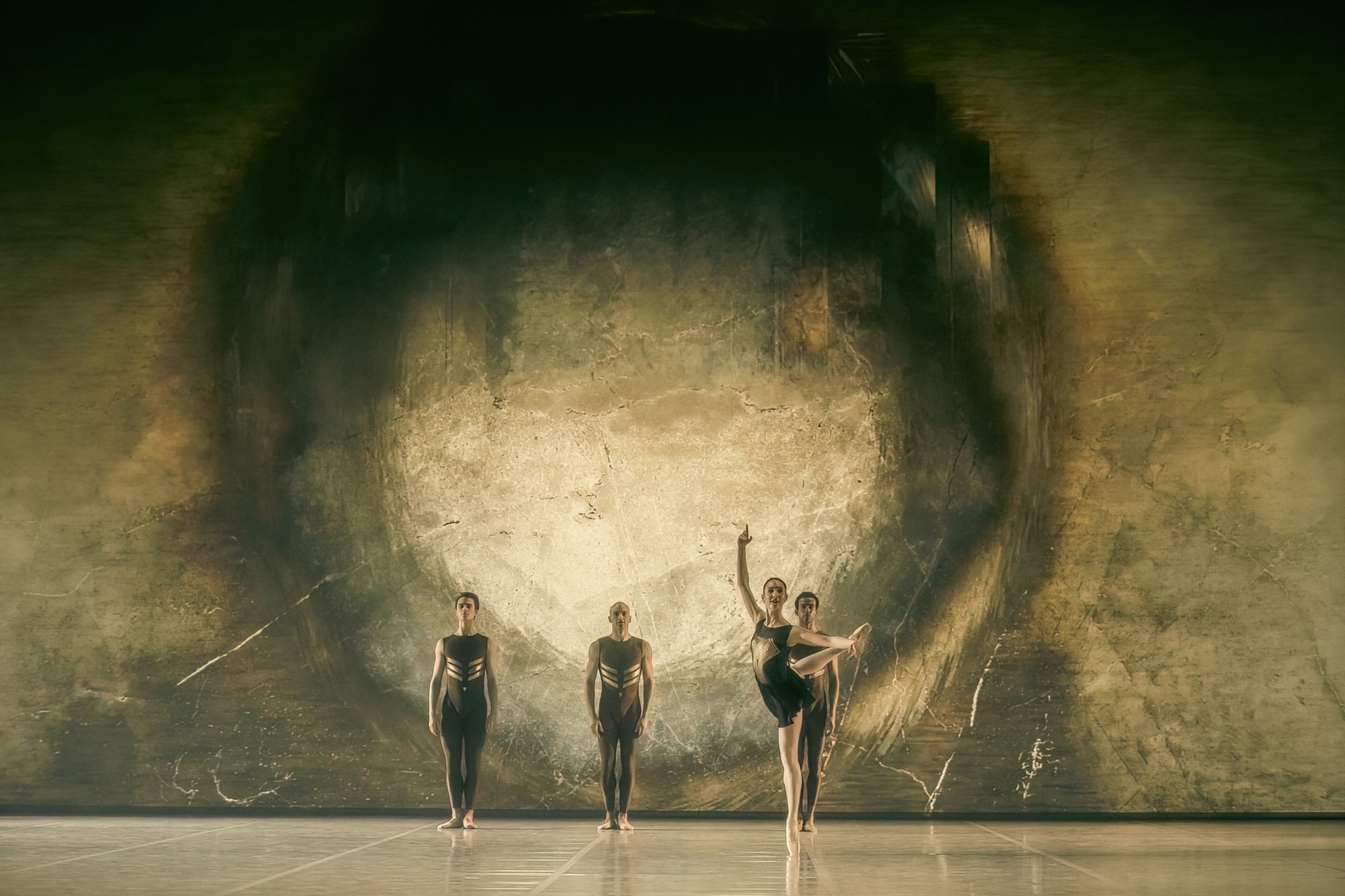 Do you approach designing for dance differently than you would an opera?
Do you approach designing for dance differently than you would an opera?
“Yes, designing for dance is generally saying most of the time more free. I don’t mean to say at all that it is better or that I’d prefer it over opera, just different. I love both. But as I’ve said before, working with nonverbal expression is closer to the core characteristics of light.”
You once said that “lighting is not just there for the eyeballs, but also to support and give perspective to the story line.” Can you elaborate a bit on what you meant by that?
“I guess I meant that if the aim is just to deliver great looking shows and nothing beyond that, it is a short trail to travel. At least I personally needed to start looking deeper in to things at a pretty young age, because I realized I would otherwise get bored with the job pretty soon.”
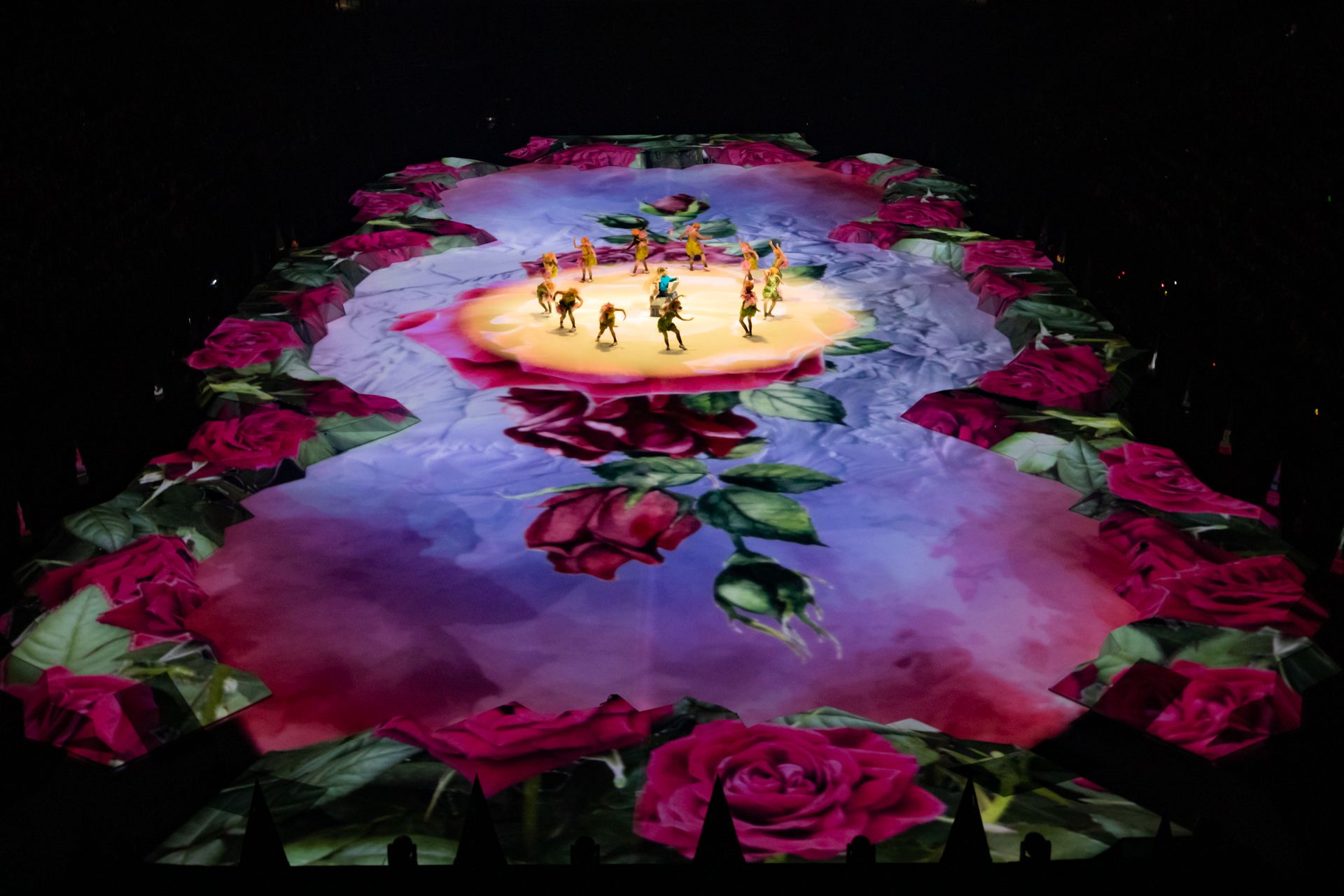 You created some stunningly beautiful and colorful panoramas for The Snow Queen a couple of years ago in Tampere. Can you describe your guiding vision for that project?
You created some stunningly beautiful and colorful panoramas for The Snow Queen a couple of years ago in Tampere. Can you describe your guiding vision for that project?
“Oh, that was such a nice project with a dream team. The design process was pretty straight forward. This was a hockey rink scale show that I wanted to deliver as a 360- seating to maximize the capacity. The main focus was on the video projection plus the sets and lighting was there to support them. In Snow Queen I wanted also the nosebleed sections in the arena to have the best seats in the house and this was delivered by the projections. The video content was thought of as sort of virtual sets, giving the performers the possibility to deliver the motion, while the visuals delivered the setting and the supportive energy.”
How are advances in technology, AI or others, influencing you as a designer?
“It seems AI will have a massive impact on everything we do. I like to think that no matter what, AI can’t dance ballet, and it can’t replace human collaboration in the arts. But I feel it is very interesting, and for sure a gamechanger. As this sort of technical development ramps up, it is increasingly valuable for the designers to look for their own voice.”
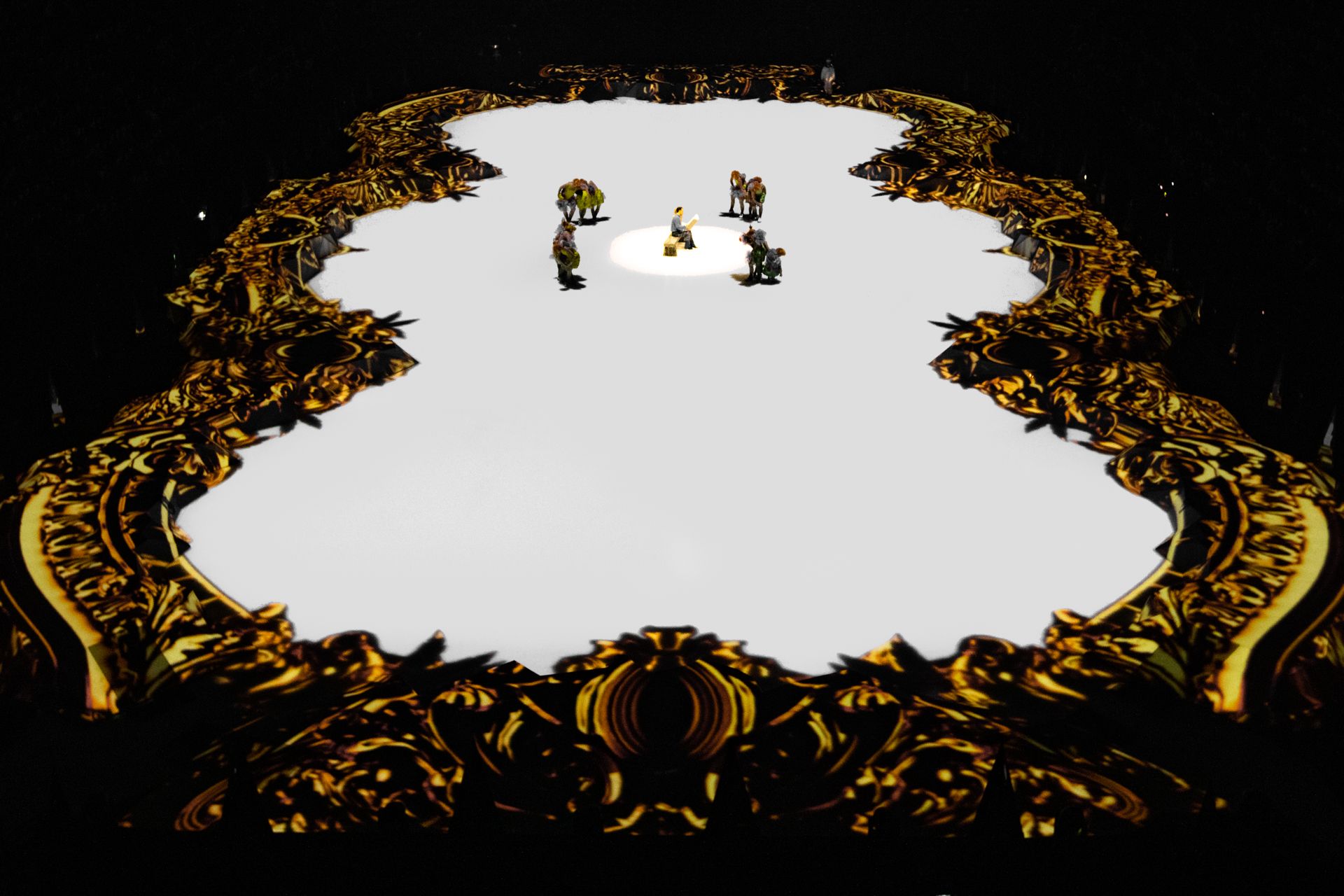 Why did you become a designer?
Why did you become a designer?
“I was very drawn to theater from quite early. I think it has mostly to do with the community and the collaborative effort we always put together making new productions. Of course, there has also always been an inner irresistible urge to create something of my own.”
What do you think you would have done if you didn’t become a designer?
“My first education was in accounting, so maybe that! No, not really… I think I might have ended up in this crazy business anyways. There was most likely no way around it.”
We are all influenced to one degree or another by our roots. So, how has being Finnish and growing up in Finland influenced your development as a designer?
“I always say to this question : How should I know? I have no reference, so I have to say it has influenced me 100-percent. Finland has been a fantastic home country to me and I have the highest appreciation of all the people I met especially in my early days in the theater for giving me a push and helping out with everything. These are the people you never forget.”
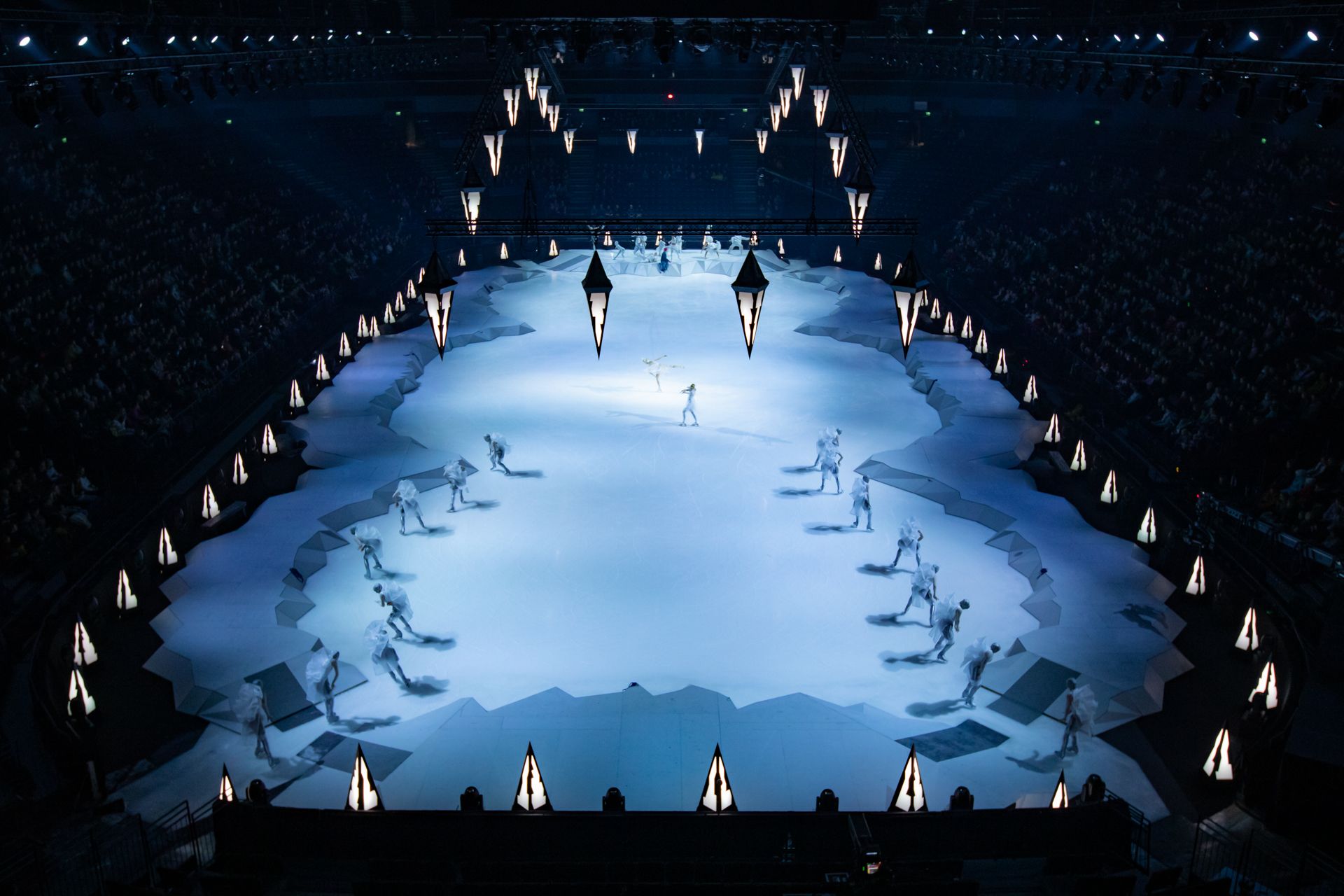 Looking at your career to date, is there one project that stands out as being the most influential in your development as a designer, or one that taught you an important lesson
Looking at your career to date, is there one project that stands out as being the most influential in your development as a designer, or one that taught you an important lesson
“I can only say it is the 30-plus years collaboration with choreographer Tero Saarinen. We started out in 1993 and our next baby, Macbeth, premieres next week in Helsinki.”
What is the one thing you want people to know about you as a designer?
“Oh, I feel the best possible feedback comes directly from people you work with and the people you share your path with. I have been extremely lucky to be able to work with so many incredible people for so long. For me it is always firstly about people and everything else comes after that. Everyone wants to be seen and be met honestly as the true person they are and I believe I have had some luck with that as well .”